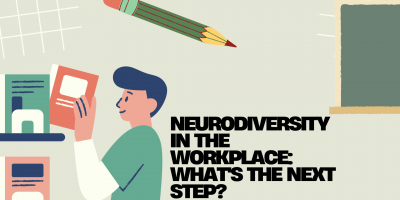
60+ Divorce Statistics in the U.S.
Explore the most recent divorce statistics that paint a clear picture of the institution of marriage in the US.


Founder & Leadership Coach of Third Space People

HR Manager at Joloda Hydraroll

Chief Activation Officer at Activate 180

CEO of PhotoAiD

CEO & Founder of BPS Security
Working environments are a mixture of different personalities, and each person comes into the organization with their own aspirations and expectations.
Hence, at some point, people’s opinions are bound to clash. Since conflict is not inherently good or bad, the employer must recognize its cause and try to prevent potentially adverse outcomes.
Failing to do this costs companies up to $1,200 every year only on conflict expenses. Thus, conflict management strategies in the workplace should not be optional but compulsory.
Financial losses aside, unresolved conflict can decrease and impact the mental well-being of employees, even more so after the COVID-19 pandemic.
The pandemic-steered changes at the workplace instigated a new set of issues. Companies saw an increase in team mediations as employees began shifting their priorities and speaking up about work dissatisfaction. Unresolved work conflict consequences influenced the “Great Resignation” and brought forth the “Great Rethinking” of the work institution.
Repercussions from internal and external workplace disputes are self-evident, especially in a post-COVID world.
So, it’s in the company’s best interest to address the issue and implement the correct conflict resolution strategies in the workplace.
This article explores the causes, consequences, and solutions for workplace conflict by deliberating on recent conflict data and expert opinions.

Individuals with opposing ideas, emotions, or values come together in the workplace to achieve a common goal. It’s what we base our society on. But their differences, when ignored by the employer, can quickly escalate into disagreements.
Conflict can happen between individuals, group members, or different departments within the firm. So, having a conflict management strategy at the workplace is helpful to both employees and employers.
By teaching everyone at the company how to deal with conflict, they will know how to recognize, approach, and handle confrontation in a way that brings constructive and long-term solutions. It’s also an excellent way to assess the situation and identify the type of conflict and proper solution.
However, not all conflict is destructive, thus the need for a well-thought-out strategy.
Having people of different backgrounds and with diverse opinions working side by side can bring new ideas to the table. Also, this can help the company prosper through healthy competitiveness and engaged employees.
PhotoAiD‘s CEO, Tomek Mlodzki, believes that conflict in the workplace is not unequivocally harmful to the organization: “Quite the opposite, I argue. According to the FSNP concept, the emergence of conflicts and their resolution is a natural organizational development process.”
The transition from constructive to destructive conflict occurs when companies ignore a pending issue or fail to recognize the core problem.
Thus, implementing effective conflict resolution strategies in the workplace means maximizing the benefits of constructive confrontation and minimizing the repercussions of contentious disagreements.
That undoubtedly makes conflict management a necessary tool for every work environment. But, to use it, one must first be able to apprehend the causes behind disputes and react timely.
The first step to a good conflict resolution is determining the cause. However, human behavior is complex and layered. Hence, pinpointing the exact reason can be challenging.
Recent findings show that most employees, or 66%, associate the lack of respect with workplace conflicts. Another study identifies additional major reasons like clashing characters and egos, stress, lack of communication, or poor leadership.
The different conflict-causing factors generally fit into three main categories, task, relationship, and value conflict.

Lack of clear communication or differences over work methods and assignments can escalate into a task conflict.
In most cases, the organization’s leaders can efficiently resolve task conflicts with clear communication and even turn them into productive competition. However, sometimes the cause of conflict runs deeper and involves personal disagreements or hostile rivalry. It’s crucial to catch this early on for an efficient solution.
One of the most common reasons for confrontation is when two people have clashing personalities, tastes, or styles.
It’s not unheard of for a colleague to find specific workplace behavior irritable, create tension, or snap because of conflicting opinions.
HR manager at Joloda Hydraroll, Wendy Makinson, agrees with this sentiment, saying: “The workplace is filled with a diverse assortment of people from different backgrounds, with different skills, and with different agendas at any one time. It’s not surprising conflict happens. The key is how to deal with it effectively.”
Usually, colleagues can and should work things out between themselves. But when that approach isn’t working, managers and HR should step in to prevent things from escalating.
Although the occasional relationship conflict is not unusual, working in a hostile environment can eventually cause long-term consequences for both the company and its employees.
Value conflicts arise when people share different values and strong beliefs on more pressing societal matters, including religion, politics, ethical behavior, etc.
These disagreements could disrupt the organizational culture and have a lasting negative effect.
Tomek Mlodzki explains his one rule that distinguishes good from bad workplace conflict: “Conflicts should concern professional, not personal matters. When the conflicts concern personal matters, they begin to engage emotions. In such a case, the positive aspects of workplace conflicts are obscured by negative, destructive elements causing frustration and a decrease in the organization’s efficiency.”
According to CIDP’s conflict management report, 35% of employees experienced interpersonal conflict.
The clash of characters, poor communication, and different expectations are all friction points employers must address if they want their company to perform better.
There are many types of workplace conflict management solutions. Their implementation often depends on the cause and how invested all parties are in resolving the conflict.
Companies that take decisive, sustainable actions not only contribute to the planet’s well-being but also reap financial benefits in the form of increased revenue and earnings.
Authentic corporate sustainability offers numerous advantages:

Workplace conflict is expensive.
So, prevention instead of intervention can be a cost-effective solution for employers. For example, clear communication can go a long way in conflict prevention.
According to Glen Bhimani, CEO & Founder of BPS Security, the most valuable strategy is complete and brutal honesty:
“While it might seem like it would cause more conflict, honesty regarding upcoming projects often catches potential conflicts before they blow up into something huge and gives you the opportunity to deal with it before it becomes a major issue.”
Other ways to prevent workplace disputes include
Integrating these preventative measures can improve communication and understanding within the organization. And a comprehensive conflict resolution policy will keep a positive work environment through attainable internal conflict management solutions.
The conflict policy framework and resolutions are individual to an organization. However, the company must communicate and familiarize employees with all HR guidelines, contracts, and legal agreements. Therefore, instead of reacting instinctively and aggravating a potential conflict, employees could recognize, understand, and address disputes through productive dialogue.
When all else fails and proactive measures don’t work, there are other ways to deal with conflict.
BPS Security’s Glen Bhimani gives valuable insight on this matter:
“If the conflict is unavoidable, then the next best strategy is to find the exact source (or sources) of the conflict.
If it is a personality issue, address that fact by either removing one of the major variables (switching out who is working on a project) or having a candid conversation with the major instigators regarding setting aside personal preferences and explaining how people talk differently, even within the same language.”
Using alternative dispute resolutions means using the most effective way to find a compromise between the involved parties.
Companies tend to use ADR measures when conflicts evolve. They want to avoid legal expenses, using creative solutions to defuse tension in the workplace.
Some ADR techniques include:
Usually, the process is legally binding, which means the decision, called an award, is final. However, if all parties agree that the award is consultative, the proceeding can be non-binding.
A recent report on managing conflict in the modern workplace by the Chartered Institute of Personnel and Development analyses the correlation between mental well-being and work disagreements.
Findings show that workplace conflict can have immediate and long-term effects on mental health.
Employees reported experiencing workplace stress, decreased motivation, anxiety, low self-confidence, and depression. What’s more concerning is that the impact can last years. Some respondents say they believe their confidence will never fully recover.
According to a Consensio survey, 84% of employees reported that conflict influenced their overall health. Up to 75% said that conflict in the workplace impacted their mental health, and 25% had to take some time off work.
Disagreements and tension at work can find their way into people’s personal lives, making mental health in the workplace a pressing issue. Even more so in this post-pandemic world that left workers feeling stressed, anxious, and scared long after the restrictions.
So, the companies’ need for effective strategies to resolve conflict in the workplace is evident.

Organizational culture defines the identity of the company and how people within the organization behave. So, unresolved workplace conflict could potentially disrupt company culture, employees’ efficiency, and job satisfaction.
According to Hareta McMullin, founder & leadership coach of Third Space People,

She goes on to explain the effect this has on businesses:
“All of these impact sales, customer experience, employee turnover, employer brand, and the real cost of your highly paid managers spending their time putting out fires and recruiting rather than leading business growth.”
Glen Bhimani says: “Workplace conflicts affect company culture in many ways. Company culture has an influence on every single thing that you and your employees do, from inner-company communication to client treatment. Conflict can easily spill over into other areas of the company culture and begin to disrupt any form of positive attitude that is present.”
A recent study evaluating the relationship between organizational culture and conflict points out its impact on employee performance.
Namely, when conflict is high, productivity goes down. However, deficient conflict levels have the same results.
In fact, moderate levels of disagreement in the workplace tend to drive the best performance in employees.
So, instead of avoiding conflict, companies should keep it at a reasonable level to drive team efficiency and innovation and work on developing strong company culture.
Conflict can take many forms in the workplace, and finding a constructive solution relies on all involved parties. By implementing strategies to manage conflict in the workplace, organizations can find constructive solutions to ongoing problems and improve employee satisfaction.
Since this is such a complex issue, there are many different resolutions.
According to Tomek Mlodzki‘s five-step problem-solving strategy, the key is to identify the problem.
“Finding a constructive solution is possible by focusing on the problem itself (and not additional factors, such as negative emotions accompanying conflicts).
Finding a way out of the conflict situation is beneficial for both sides. For this reason, I always emphasize the problem-solving strategy. It proved to be the most effective. Usually, the solution doesn’t satisfy both sides equally, but it reduces emotions and permanently eliminates the source of the conflict.
This strategy includes five stages: defining the problem, generating alternative solutions, choosing the best possible solution, introducing the plan, and controlling the results.”
Conflict exposure and resolution are part of any manager’s job. All managing levels at an organization play a key role in recognizing and addressing conflict before it escalates.
It’s also their responsibility to support employees‘ well-being and implement strategies to resolve conflict in the workplace.
Zach Smith, Chief Activation Officer at Activate 180, shares a few strategies that work best for them, including the importance of leading by example:
“This seems like a given, but there are additional ways to continue to lead by example, even with decreased transparency in your day-to-day. Practice daily habits and talk about them with your employees, encouraging them to find what works for them. You can do this by encouraging taking breaks to recalibrate, reflecting on your day, time blocking, exercising, and having a consistent morning routine.”
Smith also points out the need for emotional intelligence, saying that it’s more important than ever.
“It has become significantly easier to miss the signs of disheartened employees, overworked teams, or increased burnout rates. It is important to improve and hone your ability to observe areas of decreased morale, common struggles your team experiences, and overall culture.
Maintain close communication with your team through frequent check-ins to keep a pulse on everything. Ensure your team feels safe and comfortable bringing struggles or concerns up with you. If you feel that you’ll receive a more authentic, honest response anonymously, then hold monthly feedback surveys to ensure you remain up to date on areas of improvement for the team and culture.”
Finally, as a good conflict management strategy in the workplace, Zach Smith addresses open communication and giving effective feedback.
“In order to create a positive, constructive workplace, leaders must remain aware of every factor that plays into an effective feedback conversation.
Before giving feedback, you must consider whether it is the right time, if it is the right environment and if it is really going to be useful for this individual. If all of the aforementioned is a “yes,” follow the next steps to ensure the feedback is received well.
First, ask if the individual is open to receiving feedback at that time.
Next, bring up the situation at hand as well as examples of when they’ve seen this occur.
Then, ask for the employee’s perspective on the situation.
Finally, come to an agreement where they will set the next steps to improve the situation in the future.”
The HR department has as much leadership responsibility in conflict resolution as managers and employers. HR professionals get training to dissolve conflict and initiate employee communication on the topic.
Unfortunately, sometimes HR management learns of work disputes once they turn into conflict.
A more effective way would be for managers to warn the HR department about a potential problem early on to take proper action and vice versa.
HR manager Wendy Makinson shares some helpful tips and conflict resolution strategies in the workplace:
Although there are numerous causes for conflict at work, the damaging type of altercation has deep-seated issues, usually overlooked by the company for a long time.
To reach a productive conclusion, the conflicted parties must have an open mind and view conflict as a chance to learn and improve themselves.
As for employers, management, and the HR department, they must react in time to prevent adverse outcomes by implementing the correct type of conflict management strategies in the workplace. That way, they’ll resolve disagreements and inspire individual and company growth.
Browse our curated list of vendors to find the best solution for your needs.
Subscribe to our newsletter for the latest trends, expert tips, and workplace insights!

Explore the most recent divorce statistics that paint a clear picture of the institution of marriage in the US.

There are many ways to explain what a workaholic is – the most superficial portrayal is someone who can’t stop working. But when it comes to mental well-being, work engagement, and overall health, is workaholism a good or a bad thing?

For some employees, it manifests as a seasonal dip in productivity and motivation. But for others, January Blues hints at more profound challenges within the workplace.

The conversation on neurodiversity in the workplace is expanding, but significant improvement has yet to be made. What’s the next strategic move for employers to drive progress?
Used by most of the top employee benefits consultants in the US, Shortlister is where you can find, research and select HR and benefits vendors for your clients.
Shortlister helps you reach your ideal prospects. Claim your free account to control your message and receive employer, consultant and health plan leads.